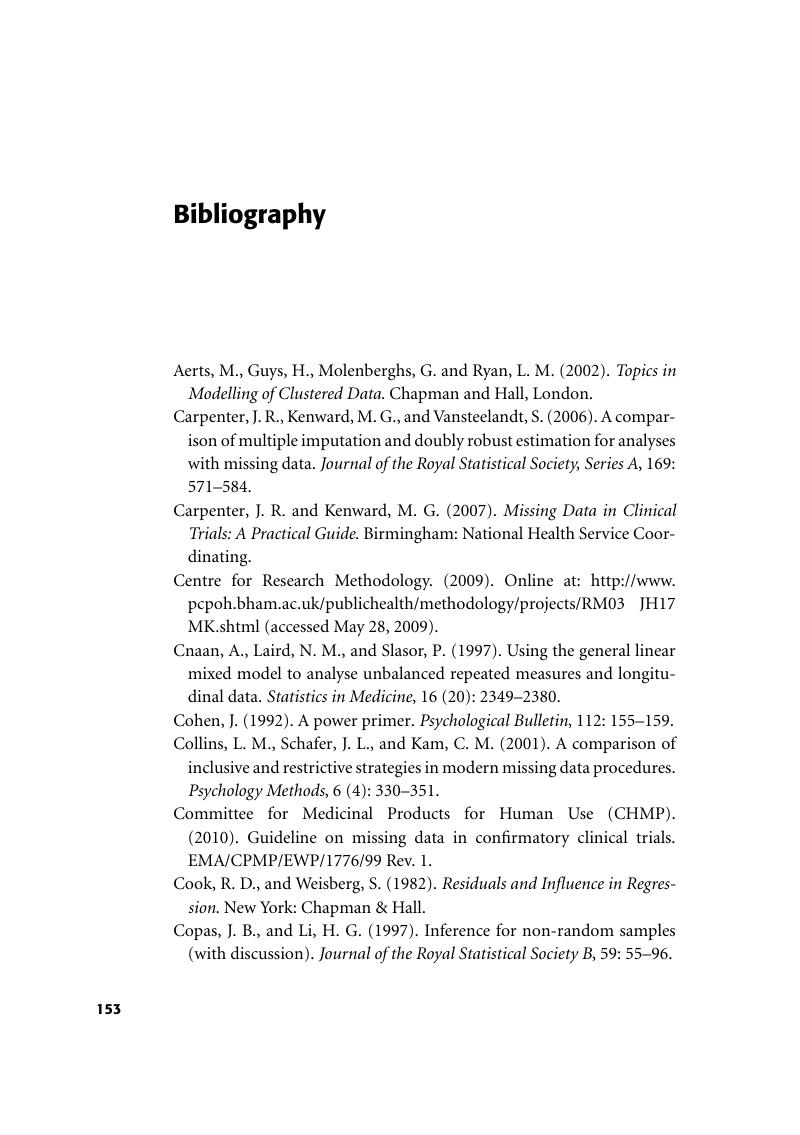Bibliography
Published online by Cambridge University Press: 05 February 2013
Summary

- Type
- Chapter
- Information
- Preventing and Treating Missing Data in Longitudinal Clinical TrialsA Practical Guide, pp. 153 - 160Publisher: Cambridge University PressPrint publication year: 2013



